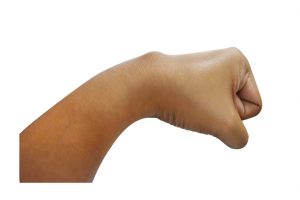Of all the ailments an orthopedic doctor can help cure, Ganglion cysts are one of the most common. Ganglion cysts are viscous fluid filled lumps or masses that form around joints and tendons. They tend to be firm to the touch and uniformly round. Often, orthopedic doctors will use a light to determine if the mass is translucent, indicating the mass is fluid filled and not some other type of growth.
What is a Ganglion Cyst?
Ganglion Cysts are benign and will not develop into cancer. These cysts can range in size from very tiny and unnoticeable below the skin, to larger peach pit sized lumps that appear most commonly on the palms and wrists, but also in the ankles and feet.
While not always painful, Ganglion Cysts can cause pain by asserting pressure on a nerve, or discomfort by limiting motion in a joint. The exact cause of a Ganglion cyst is not known. Anyone can develop one, but they occur more frequently in women from 20 to 40 years old. Orthopedic doctors have determined that other risk factors include those who suffer from osteoarthritis, wear and tear to joints, as well as those people who have sustained tendon or joint injuries making them more susceptible to the development of Ganglion Cysts.
Can an Orthopedic Doctor Help with Your Ganglion Cyst
The good news about Ganglion cysts is that there are several treatment options that you can discuss with your orthopedic doctor. The first option your orthopedic doctor may suggest is a simple office procedure called an aspiration. This procedure requires your orthopedic doctor to numb the area of skin where the Ganglion cyst is located and then insert a small needle to draw the fluid out of the cyst. While immediately effective, it does not remove the root of the cyst meaning the cyst may redevelop later requiring another aspiration to be done. If aspiration is not an option, your orthopedic doctor may recommend surgery to remove the cyst and underlying cause. This is most commonly done on an outpatient basis, but will require 3 to 6 weeks to for the incision to heal and full range of motion to return.
Return to Blog